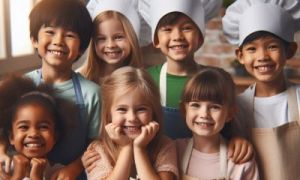The following is a guide for Educators who are toilet training children within their room. It will provide you with information and strategies on how to assist young children during toilet training during the day in an early childhood setting.
Being an Educator in the toddler's room one of the many self-help skills you need to encourage is toilet training. Toilet training is a vital step in a child's development. It can be frustrating, it takes time, it's messy and it's unpredictable. No matter what it's so important that you remain patient. All Educators in the room should know the toileting plan for each child and be consistent with their approach.
A child will show clear signs that they are ready to start using the toilet and this is the cue to start the process.
Working With Parents During Toilet Training
It's important that you work in partnerships with parents while the child is learning to use the toilet.
Parents, as well as the Educators, need to be on the same page when it comes to supporting a child through toileting. Talk to parents to know what is happening at home in regards to toileting. A general rule is that toilet training should be started at home before toileting starts at the centre.
- When a child starts toilet training they should be encouraged to wear undies. Pull-ups etc. still feels like a nappy and even though it helps keeps accidents contained and less messy a child may be hesitant to go to the toilet as they wear a pull-up. If they have an accident in undies they will feel uncomfortable which helps them to understand that they need to sue the toilet.
- Some parents may have certain practices that they use at home when toileting. Encourage parents to share their routines and strategies and see how you can implement this within your toileting plan.
- If parents have certain practices that cannot be implemented at the centre, it's important to explain why and work with parents to come up with a compromise. E.g - a parent may reward a child with a food treat each time their child uses the toilet. This may not be consistent with your centre's nutritional policy so you need to arrange an alternative.
- Parents should bring extra clothes for their child once toilet training begins (especially pants and underwear).
- The child should be dressed in clothes that are comfortable and bottoms that they can pull up and down by themselves.
- Share the toileting procedure/policy with families.
- Keep a daily toileting record to let parents know how their child went with toileting.
- Develop a toileting plan for each child in consultation with parents. Review every 2 weeks.
Working With Children During Toilet Training
For a child, toilet training is a big milestone. It's also a time for them to learn to attune to their bodily functions and to understand when it's "time" to go to the toilet. During this time you need to be patient and encouraging. - the child is learning a new skill and it's often and a process of trial and error and accidents will take place.
As an Educator when toilet training you need to remember:
- No matter how busy you get, what problems arise, if you feel tired or you are having a bad day, you need to be consistent with toilet training.
- A Child can become easily distracted while playing, during activities, not wanting to miss out on experiences, which may cause the child to have an accident.
- Take the child to the toilet at regular intervals (every half an hour). Even if the child is hesitant to go - take them anyway. You need to constantly remind the child to go. If the child doesn't - you to need to make them go. Don't forget about it for the time being and do it later. Make a point to do toileting regularly and consistently throughout the day.
- Get the child to sit on the toilet for a few mins before getting off.
- If you are finding it difficult for a child to stay on the toilet for a couple of minutes, use an egg timer, count, sing a song etc.
- To remind a child to go to the toilet you could ring a bell, sing a special song or clap a rhythm. Each time you do this, the children who are toilet training should stop what they are doing and get ready to go to the toilet.
- Teach the child the correct handwashing procedure and make sure they wash their hands well after using the toilet.
- When a child goes while on the toilet, make it a big deal because it is! The more encouragement they get the more likely they will use the toilet.
- Accidents are going to happen. don't make it a big deal and never shame the child in front of others. The other children don't need to tell if an accident occurs and respect the child's privacy when changing in front of others.
- Always use positive language and actions while Helping a child to learn to use the toilet and communicate to children that it isn't yucky or gross and it is a normal natural process.
- Read and be familiar with the policy and procedures for dealing with soiled clothing. Usually, this is kept in a plastic bag and given to parents on pick up. You could probably have a bucket with a lid to place all soiled clothing inside. Use a plastic bag for the clothing and clearly write the child's name so parents can identify what they need to take home to wash.
- During group, time read books on toileting, have group discussions, talk about using the toilet to make children feel more comfortable.
When working together with parents supporting and assisting a child to use the toilet will be a positive experience towards their independence.
Reference:
Lyndsey Mundey, Toileting, Putting Children First, NCAC


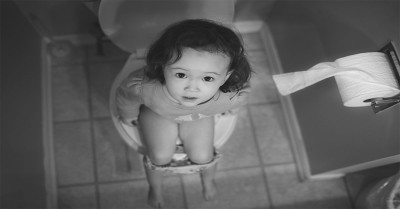

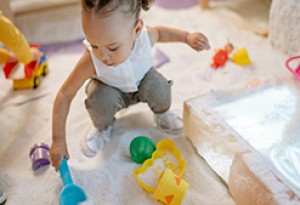
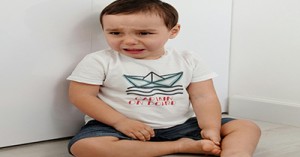
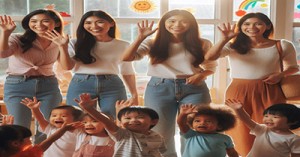
 As an Educator in Australia, your pay rate falls under the Children’s Services Award 2010. This award states the minimum amount that an employer can
As an Educator in Australia, your pay rate falls under the Children’s Services Award 2010. This award states the minimum amount that an employer can When working as a qualified Early Childhood Teacher (with a university degree) within a service, your rate of pay will come from the Educational Services
When working as a qualified Early Childhood Teacher (with a university degree) within a service, your rate of pay will come from the Educational Services When working as a Diploma Qualified Educator your pay rate is from the Children's Services Award 2010. This Award states your minimum rate of pay
When working as a Diploma Qualified Educator your pay rate is from the Children's Services Award 2010. This Award states your minimum rate of pay When working as a Cert 3 Qualified Educator, your pay rate is from the Children's Services Award 2010. This Award states your minimum rate of
When working as a Cert 3 Qualified Educator, your pay rate is from the Children's Services Award 2010. This Award states your minimum rate of Educational Leaders play a crucial role in their early childhood service by ensuring that the educational program aligns with best practices and supports the holistic
Educational Leaders play a crucial role in their early childhood service by ensuring that the educational program aligns with best practices and supports the holistic In early childhood education and care, ratios are more than a technicality—they are a frontline safeguard. Every child deserves responsive supervision, emotional connection, and developmental
In early childhood education and care, ratios are more than a technicality—they are a frontline safeguard. Every child deserves responsive supervision, emotional connection, and developmental Here’s a comprehensive Mobile Phone and Smart Watch Policy tailored for early childhood education and care (ECEC) services in Australia, aligned with the latest 2025
Here’s a comprehensive Mobile Phone and Smart Watch Policy tailored for early childhood education and care (ECEC) services in Australia, aligned with the latest 2025 With the new national child safety reforms kicking in on 1 September 2025, early childhood services like yours have a real opportunity to lead the
With the new national child safety reforms kicking in on 1 September 2025, early childhood services like yours have a real opportunity to lead the The Sea of Fish Challenge is a national initiative that invites children, educators, families, and communities to create and display fish artworks as a symbol
The Sea of Fish Challenge is a national initiative that invites children, educators, families, and communities to create and display fish artworks as a symbol Across the early childhood education and care sector, educators are sounding the alarm: current staffing ratios are insufficient to deliver safe, meaningful, and developmentally appropriate
Across the early childhood education and care sector, educators are sounding the alarm: current staffing ratios are insufficient to deliver safe, meaningful, and developmentally appropriate

